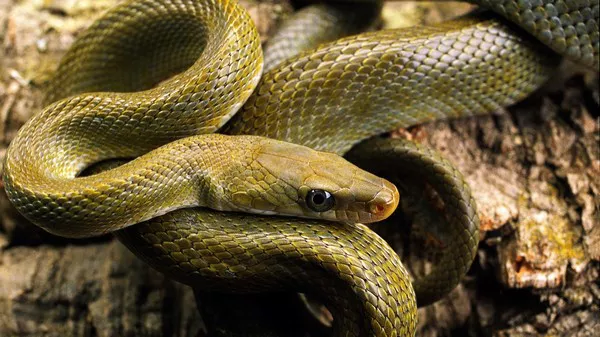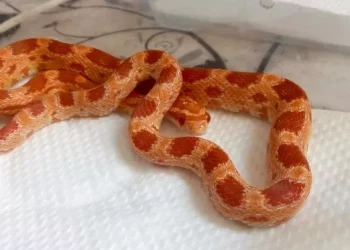When it comes to pet reptiles, corn snakes and ball pythons are two of the most popular species among both novice and experienced herpetologists. Each species boasts its own unique characteristics, care requirements, and temperament, making them appealing to different types of reptile enthusiasts. This article will delve into the differences and similarities between corn snakes and ball pythons, exploring their natural habitats, physical characteristics, behavior, care needs, and more.
1. Introduction to Corn Snakes and Ball Pythons
Overview of Corn Snakes
Corn snakes (Pantherophis guttatus) are a species of rat snake native to the southeastern United States. They are known for their striking coloration, docile nature, and adaptability. These snakes have a reputation for being easy to care for, making them a popular choice for first-time snake owners.
Overview of Ball Pythons
Ball pythons (Python regius), also known as royal pythons, originate from sub-Saharan Africa. They are known for their relatively small size compared to other python species, along with their calm temperament. Ball pythons are often favored by reptile enthusiasts for their diverse morphs, which feature a wide array of colors and patterns.
2. Natural Habitat and Distribution
Corn Snake Habitat
Corn snakes inhabit a variety of environments, including forests, grasslands, and fields. They are particularly fond of areas near agricultural fields, where they can find ample food sources like rodents. Corn snakes are semi-arboreal, often found in trees and bushes, which helps them escape predators and hunt for prey.
Ball Python Habitat
Ball pythons primarily reside in grasslands, savannas, and open forests across West and Central Africa. They prefer areas with plenty of hiding spots, such as burrows or dense vegetation. Ball pythons are more terrestrial than corn snakes, often found hiding in crevices or beneath rocks, which provides them with protection from predators.
3. Physical Characteristics
Size and Length
Corn snakes typically grow to an average length of 4 to 6 feet, although some individuals can reach lengths of up to 7 feet. They have slender bodies that allow for agile movements, making them effective hunters.
In contrast, ball pythons generally range from 3 to 5 feet in length, with the occasional specimen reaching up to 6 feet. They have stocky bodies that give them a more robust appearance compared to corn snakes.
Coloration and Patterns
One of the most distinguishing features of corn snakes is their vibrant coloration. They exhibit a wide range of colors, including orange, red, yellow, and brown, often with black or dark brown markings along their backs. The characteristic pattern resembles that of a checkered or blotched appearance.
Ball pythons are famous for their incredible variety of morphs. While the wild-type ball python typically has a dark brown or black base color with yellow or gold blotches, captive breeding has resulted in numerous color variations, including albino, lavender, and pastel morphs. This genetic diversity is a major reason for their popularity in the pet trade.
Head and Eye Characteristics
Corn snakes have a distinct head that is slightly wider than their neck. Their eyes are round and typically yellow or orange, which provides excellent visibility in low-light conditions.
Ball pythons have a more rounded head and their eyes are somewhat larger in proportion to their heads compared to corn snakes. Their pupils are elliptical, which helps them to better judge distances—a useful trait for a constrictor that needs to strike accurately.
4. Behavior and Temperament
General Behavior
Corn snakes are known for their active and curious nature. They often explore their environment, climbing and burrowing, which makes them engaging pets to observe. This species is also known for its tendency to be friendly and tolerant of handling, making it an excellent choice for families and first-time snake owners.
Ball pythons, on the other hand, are more laid-back. They often prefer to stay in their hides during the day and may be less active than corn snakes. While they can also be friendly, ball pythons may take longer to acclimate to handling, particularly if they are not regularly socialized as hatchlings.
Feeding Habits
Both corn snakes and ball pythons are carnivorous and primarily feed on rodents in the wild. Corn snakes typically consume small mammals such as mice and rats, and they are known for their ability to eat prey larger than their own head due to their flexible jaws. They are often more enthusiastic feeders and may be more willing to take prey items of varying sizes.
Ball pythons also eat rodents but can sometimes be more finicky eaters, especially during the breeding season or when stressed. They may refuse food for extended periods, a behavior that can be concerning for new owners. However, when they do eat, they will usually consume one appropriately-sized rodent per feeding.
Handling and Socialization
When it comes to handling, corn snakes are generally more adaptable. Their active nature makes them accustomed to being handled and they typically do not exhibit defensive behaviors. This adaptability makes them a great choice for families and those new to snake keeping.
Ball pythons, while also capable of being handled, may require more patience and consistency. They can become defensive if stressed, especially if they feel threatened or insecure. Socialization is important; frequent, gentle handling from a young age can help them become more comfortable with human interaction.
5. Care Requirements
Housing and Enclosure Setup
When setting up a habitat for either species, it’s essential to create an environment that mimics their natural habitat.
Corn Snake Enclosure
Corn snakes thrive in a terrarium or glass aquarium that is at least 40 gallons for an adult snake. The enclosure should have a secure lid, as corn snakes are adept escape artists. The ideal temperature gradient ranges from 75°F (24°C) on the cooler side to 85°F (29°C) on the warmer side. Providing a hiding spot, such as a log or cave, is important for their sense of security.
Ball Python Enclosure
Ball pythons also require a minimum of a 40-gallon enclosure, but many owners opt for larger habitats to accommodate their stocky bodies. The temperature gradient should be similar, with a basking spot of around 90°F (32°C) and a cooler area of around 75°F (24°C). Ball pythons benefit from having multiple hides to retreat to, as this helps them feel secure.
Substrate Choices
The choice of substrate is important for both species.
Corn Snake Substrate: Aspen shavings or cypress mulch are popular choices as they provide good odor control and allow for burrowing behavior.
Ball Python Substrate: Coconut coir or aspen shavings can work well, but many owners also choose reptile carpet for easier cleaning and maintenance.
Humidity and Temperature Needs
Humidity levels differ slightly for each species. Corn snakes thrive in a humidity range of 40-60%, while ball pythons require slightly higher humidity, around 50-70%. Maintaining appropriate humidity is vital for shedding, and owners can use water dishes, misting, or substrate choice to achieve this.
Feeding and Nutrition
Both species should be fed appropriately sized prey.
Corn Snakes: Young corn snakes can eat pinky mice, while adults may require larger mice or small rats. Feeding frequency should be every 5-7 days for juveniles and every 10-14 days for adults.
Ball Pythons: Similar to corn snakes, young ball pythons eat smaller mice, while adults may eat rats. However, ball pythons might take longer to accept food, and it is recommended to offer prey that is about 1.5 times the width of the snake’s body.
Health Considerations
Both species can suffer from common health issues such as respiratory infections, mites, and shedding problems. Regular veterinary check-ups and a proper husbandry routine can help prevent health issues. Observing behaviors and physical condition will also provide insights into their well-being.
6. Lifespan and Long-Term Commitment
Lifespan of Corn Snakes
Corn snakes are known for their longevity, typically living between 15 to 20 years in captivity. With proper care, some individuals can even reach up to 25 years.
Lifespan of Ball Pythons
Ball pythons also have a long lifespan, generally living 20 to 30 years in captivity. This long-term commitment should be considered when acquiring either species, as they require consistent care, attention, and a stable environment throughout their lives.
Conclusion
Both corn snakes and ball pythons make excellent pets, but they cater to different preferences and lifestyles. Corn snakes are often more active and social, making them a great choice for families and those seeking an engaging pet. In contrast, ball pythons offer a unique opportunity to explore the vast variety of morphs and colors, appealing to those interested in genetics and breeding.
Understanding the differences in their care requirements, behavior, and natural history can help prospective snake owners make informed decisions. Ultimately, choosing between a corn snake and a ball python will depend on individual preferences, care capability, and the kind of interaction one seeks from their reptilian companion. With the right knowledge and commitment, both species can thrive and bring joy to their owners for many years to come.
Related Topics:


























